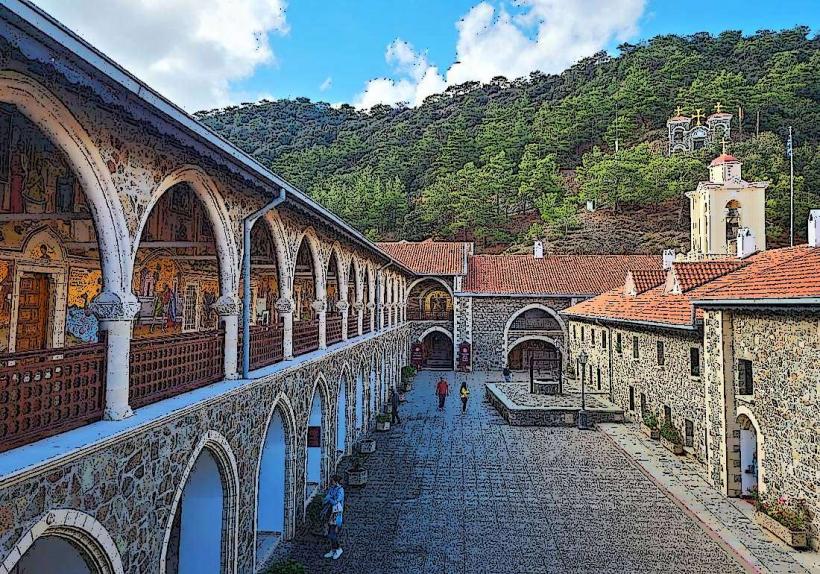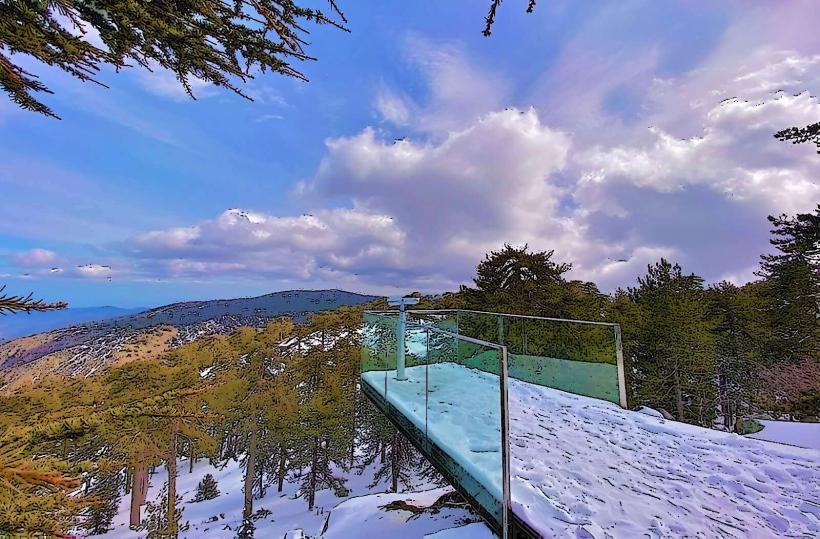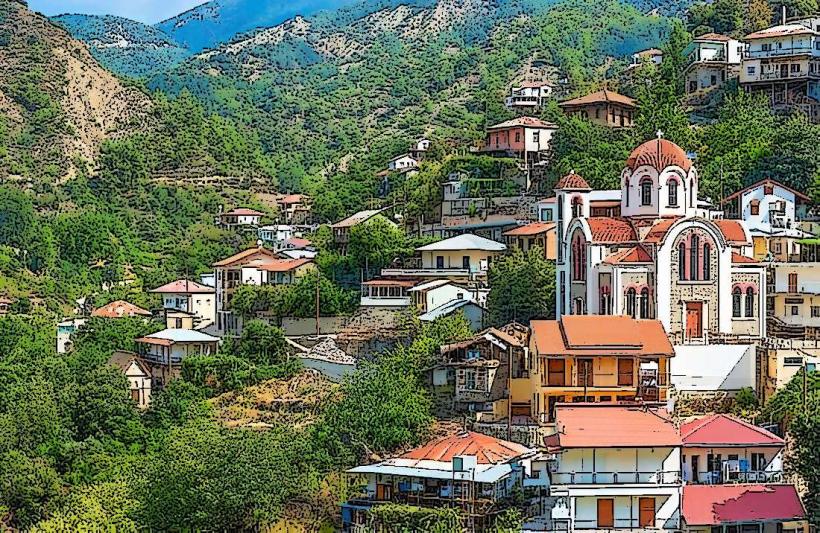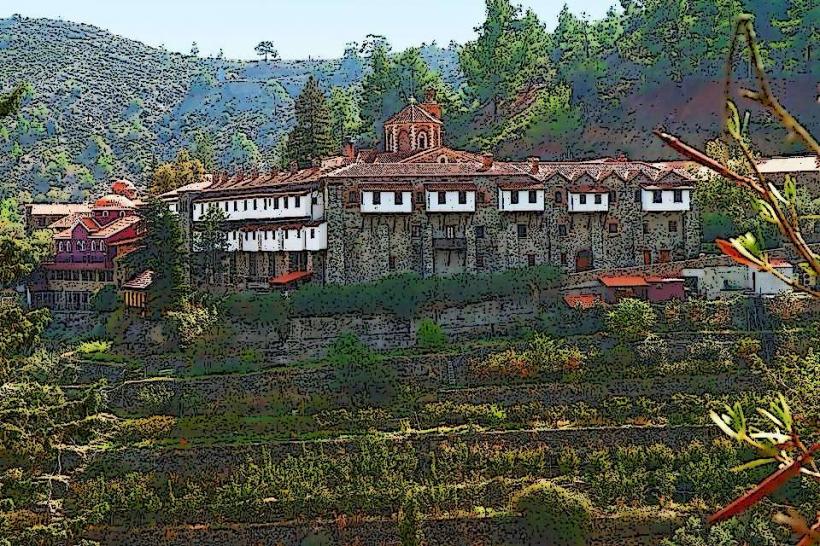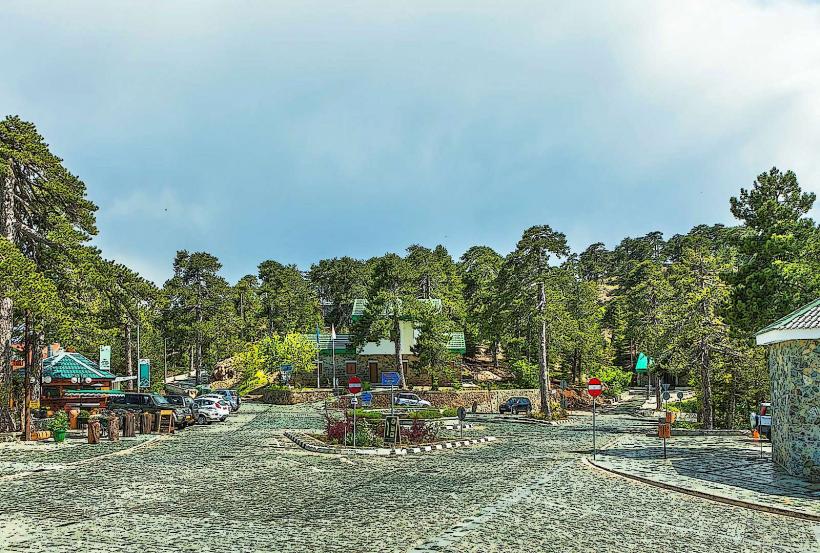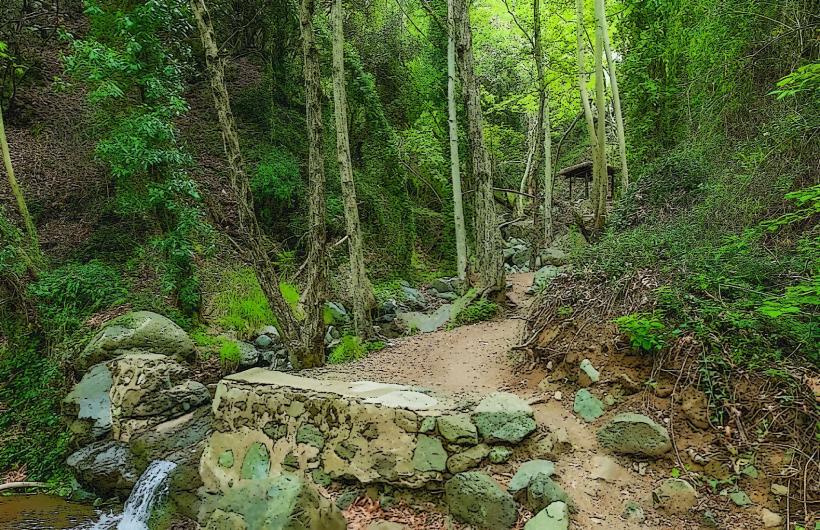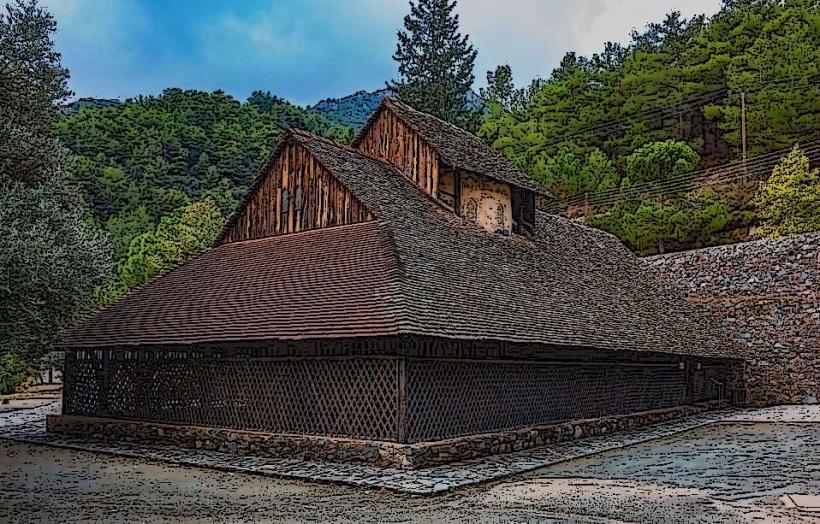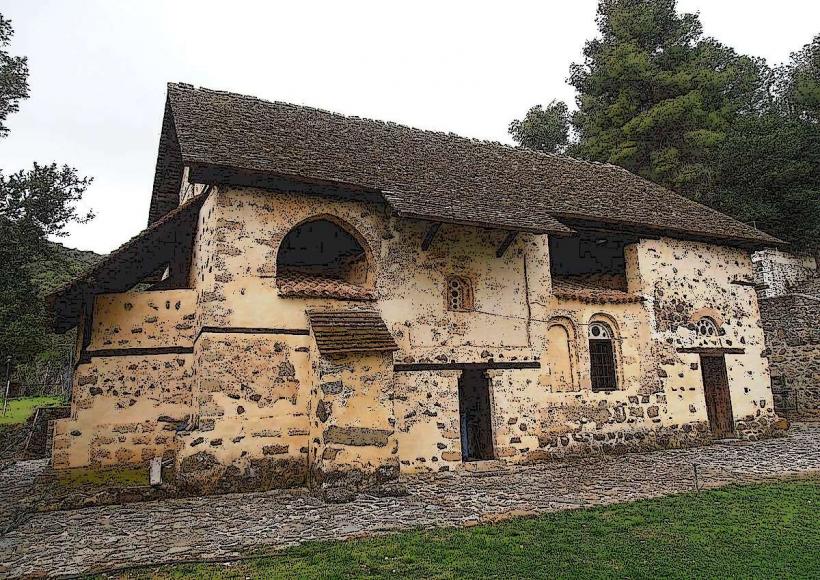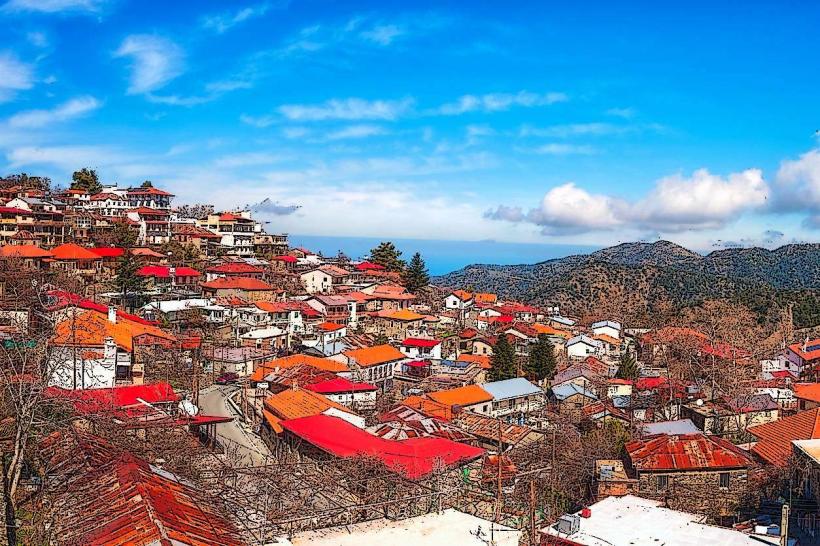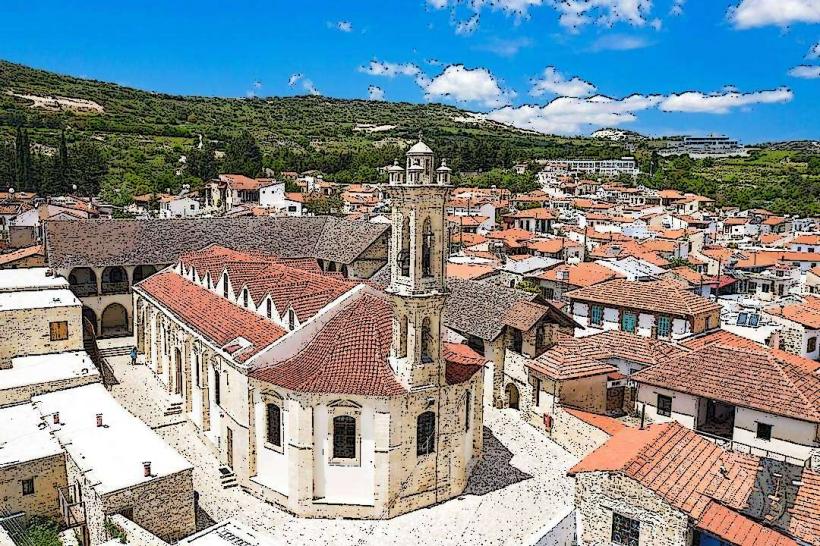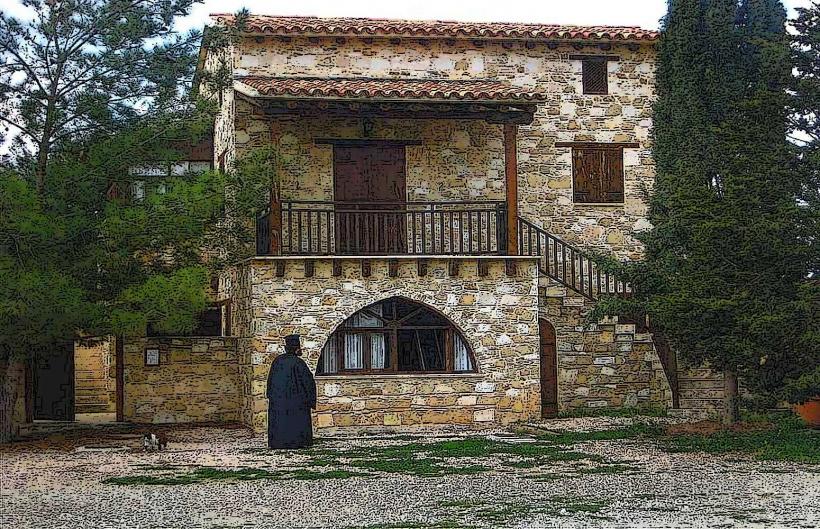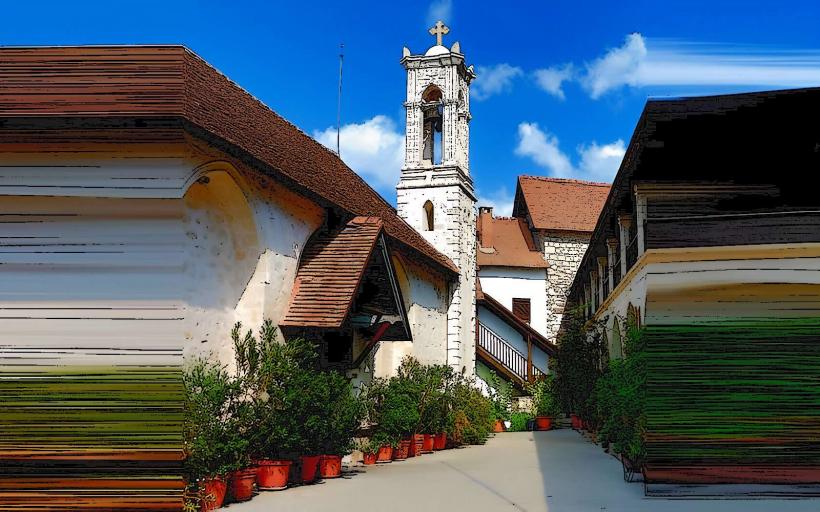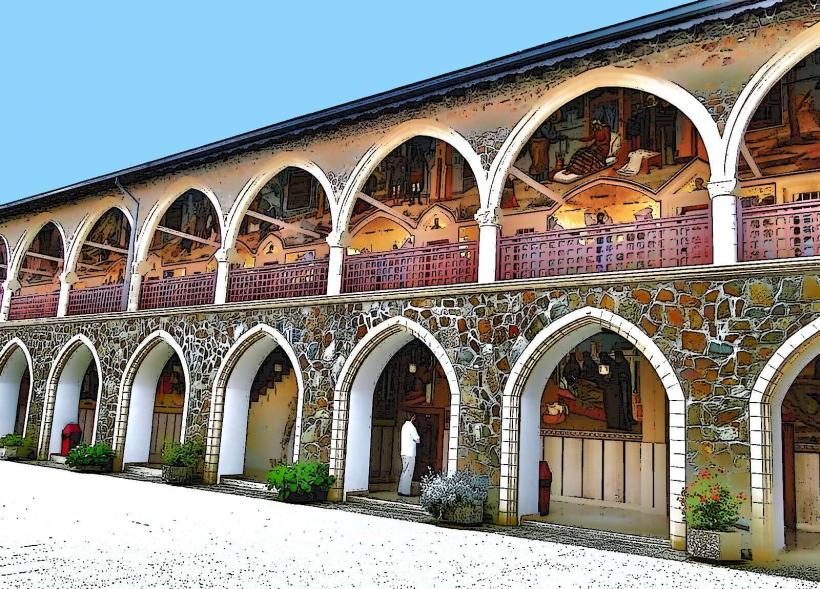Information
Landmark: Church of Archangel MichaelCity: Troodos
Country: Cyprus
Continent: Europe
The Church of Archangel Michael is a prominent Greek Orthodox church in Cyprus, with several churches bearing this name across the island. Most of these churches are historically significant, reflecting the deep religious and cultural heritage of Cyprus. One of the most notable of these is located in the village of Pedoulas, in the Troodos Mountains, which is part of a UNESCO World Heritage site for its painted churches.
1. Location
- The Church of Archangel Michael in Pedoulas is located in the Troodos Mountains, a region known for its Byzantine churches and monasteries. Pedoulas is a picturesque village, and the church is a key part of its historical and cultural landscape.
- The church is one of several painted churches of the Troodos region, which are included in the UNESCO World Heritage listing for their remarkable Byzantine-era murals.
2. Historical Significance
- Origins: The Church of Archangel Michael in Pedoulas dates back to the 15th century (around 1474 AD), though it has undergone renovations and additions over time. Like many of the Troodos churches, it is an example of Byzantine ecclesiastical architecture.
- Religious Importance: The church is dedicated to Archangel Michael, one of the most revered figures in Christianity, often seen as the protector and defender of the faithful. It holds great importance for the local community, as it serves both as a place of worship and a spiritual center for pilgrims.
3. Architectural Features
- Byzantine Architecture: The church’s architecture follows the traditional Byzantine style, characterized by its small size, simplicity, and an emphasis on spiritual function over decorative excess. It has a rectangular layout with a wooden roof, often found in churches in the Troodos region, and the walls are made of local stone.
- Frescoes and Murals: The Church of Archangel Michael in Pedoulas is best known for its extraordinary frescoes that adorn the interior. These painted murals are a key feature of the church and reflect Byzantine iconography from the Middle Ages. The frescoes depict scenes from the Bible, including the life of Christ, saints, and images of the Archangels, with Archangel Michael often depicted in military attire, defeating the forces of evil.
- Iconostasis: Like most Greek Orthodox churches, the church has an iconostasis (an ornate screen of icons) separating the altar from the congregation. The iconostasis of the Church of Archangel Michael is particularly notable for its detailed and beautifully painted icons, reflecting the rich Byzantine tradition.
4. UNESCO World Heritage Site
- Part of the Painted Churches: The Church of Archangel Michael is part of a collective group of painted churches in the Troodos Mountains that are recognized by UNESCO as a World Heritage site. These churches are famous for their Byzantine-style frescoes, which are among the best-preserved examples of medieval religious art in Europe.
- The inclusion in the World Heritage list highlights the cultural and artistic importance of these churches, which provide an invaluable insight into the spiritual and artistic life of the people of Cyprus during the Byzantine and post-Byzantine periods.
5. The Church’s Iconography
- Iconography: The frescoes within the church include detailed depictions of various saints, scenes of Christ's life, and especially Archangel Michael as the protector of Christians. The imagery represents the theological emphasis of the time and the role of saints and angels in the religious practices of the Byzantine Empire.
- The depiction of Archangel Michael in the frescoes is particularly significant. He is often shown as a warrior, dressed in armor and holding a sword, symbolizing his role as a divine protector and defender against evil.
6. Interior Design
- The interior of the church is relatively small, but it is strikingly adorned with religious art. The frescoes cover almost every inch of the walls, and the wooden ceiling is also often painted or decorated. The artistic work represents the pinnacle of Byzantine-style religious art, with an emphasis on vivid colors, intricate patterns, and spiritual symbolism.
- The church’s altar is the focal point of the interior, with a decorative wooden altar screen and sacred liturgical vessels used in the Orthodox Christian tradition. These objects, along with the frescoes, provide an immersive experience into the spiritual life of the Cypriot Orthodox community.
7. Cultural and Religious Role
- Place of Worship: The Church of Archangel Michael continues to function as an active place of worship for the local Orthodox Christian community. It is a center for religious services, including liturgies, feasts, and celebrations related to the Archangel Michael, such as the Feast of the Archangels on November 8.
- Pilgrimage and Tourism: The church attracts both pilgrims and tourists due to its religious significance and artistic heritage. It is part of the larger network of painted churches in the Troodos region, which are considered major religious and cultural attractions in Cyprus. The churches are visited by those interested in history, Byzantine art, and those who seek spiritual reflection in the serene mountain setting.
8. Visiting the Church
- Opening Hours and Access: The church is generally open to visitors throughout the day, and entry is free, although donations are welcomed to help with its preservation. Visitors are encouraged to respect the sacred nature of the site and observe local customs, especially during religious services.
- Guided Tours: For those interested in learning more about the history, iconography, and frescoes, guided tours are available in many of the painted churches of the Troodos region, including the Church of Archangel Michael. Guides offer in-depth explanations of the art and history of the church, making the visit more enriching.
9. Conclusion
The Church of Archangel Michael in Pedoulas is a remarkable example of Byzantine religious architecture and art. Its extraordinary frescoes and iconography, alongside its rich history as a place of worship, make it a significant site for both pilgrims and visitors interested in the island’s religious and cultural heritage. Whether you're drawn by the history, the art, or the spirituality, the church offers a unique glimpse into Cyprus’ Byzantine past and its ongoing traditions.

